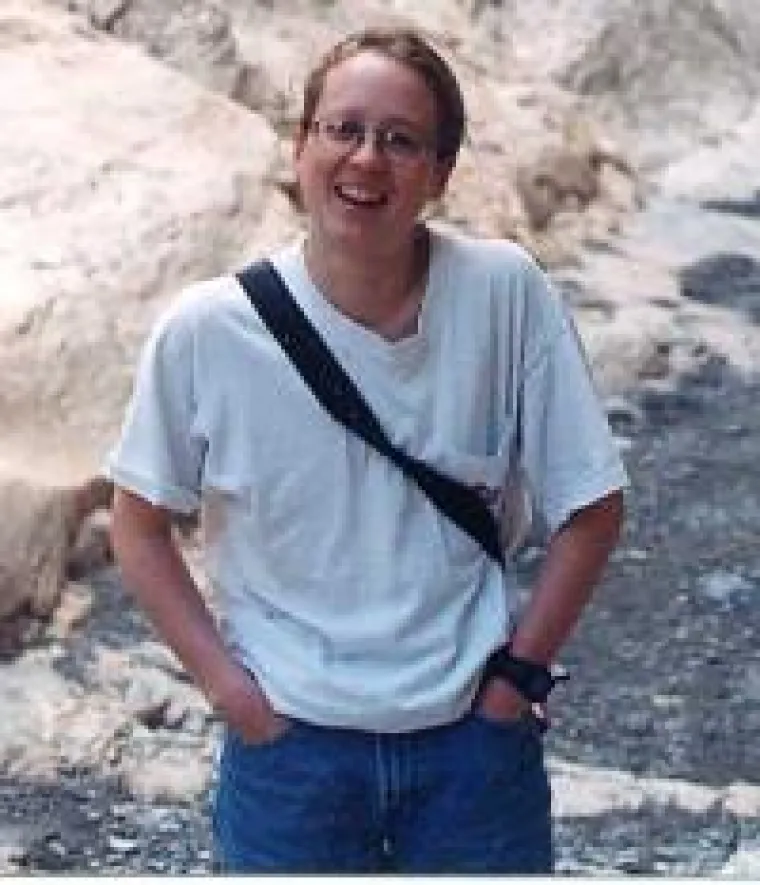Carrie Morrill

Carrie Morrill, co-sponsored by Geoscience.
My outreach project is to develop and carry out a program designed to familiarize middle school or high school students with the scientific method and with several issues related to climatic change and variability. In this program, students will carry out a scientific experiment to test the following hypothesis: the amount of winter rainfall in Tucson varies with the state of the El Niño-Southern Oscillation. To test this hypothesis, students will collect several types of data. These include precipitation amount for the current winter measured in their own rain gauges, precipitation amount for past winters available from the internet, and information about the state of ENSO gathered from satellite data. Students will "publish" our results on our own web page.
In the beginning of the school year, I will work for several months with a well-established education outreach project, the GLOBE (Global Learning and Observation to Benefit the Environment) project, to learn about developing a successful inquiry-based curriculum. I will also use this opportunity to develop contacts with teachers in the Tucson Public School District. After working with teachers to tailor my proposed project to the abilities and interests of a particular age level, we will initiate the project in their classes.
This summer, I attended a workshop for GLOBE teachers to learn how this program is used in the classroom. This fall, I visited Ms. Suzanne Maly's middle school class (Grades 6-8) at Safford Middle School several times a week to help students with their GLOBE activities. The students collect temperature, humidity, cloud cover and precipitation measurements from their weather station and enter their data into the GLOBE server. These measurements will be used by scientists to study topics such as global warming. This winter, Ms. Maly and I have begun leading a discussion of the students' GLOBE results during one class each week. Each week, the students examine a different set of graphs and try to make sense of their results. Our goal is to give the students practice in critical thinking and asking questions. This spring, we plan to have the students turn their questions into hypotheses that they will test using the meteorological data that they have collected. We hope to share our experiences (successes and failures) with other GLOBE teachers in order to make it easier for them to initiate similar projects in their own classes.
Fall 2001 Update
My first step in carrying out my outreach project was to work for several months with a well-established education outreach project, the GLOBE (Global Learning and Observation to Benefit the Environment) project, in order to learn about developing a successful inquiry-based curriculum and to develop contacts with teachers in the Tucson Public School District. In the summer of 2000, I attended a workshop for GLOBE teachers to learn how this program is used in the classroom. I began visiting a middle school classroom (Grades 6-8) several times a week the following fall and spring and I helped students with their GLOBE activities (e.g., collecting temperature, humidity, cloud cover and precipitation measurements from their weather station and entering their data into the GLOBE server).
While working with GLOBE, I have noticed the difficulties teachers face in getting their students to critically examine the data they collect and to ask and answer scientific questions using their data. There is a significant need for a curriculum unit focused on the scientific method that teachers can integrate with their GLOBE data collection. Currently, I am redesigning my proposed program in order to achieve this. This fall I will be testing and refining the curriculum unit in several middle school classes in Tucson. Eventually, my goal is to make the unit widely available so that any of the more than 10,000 GLOBE classrooms around the world would be able to use it.

